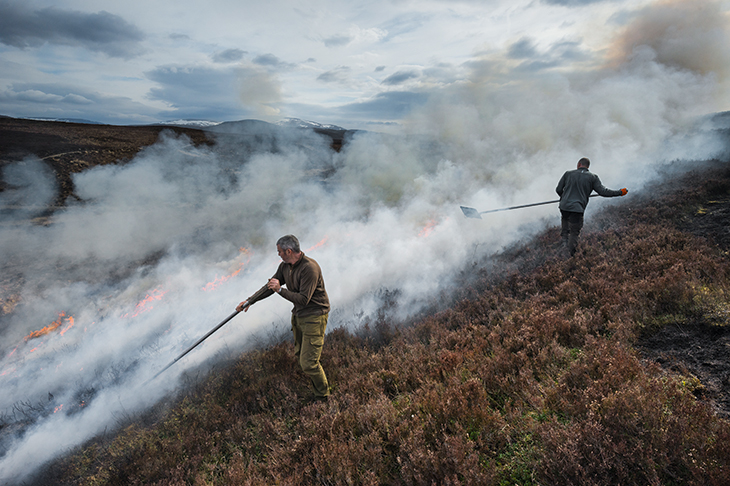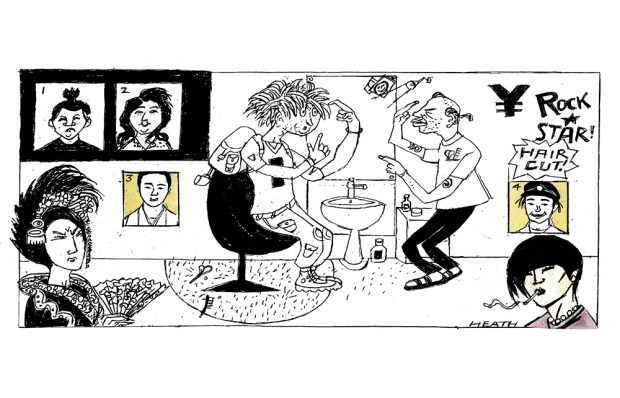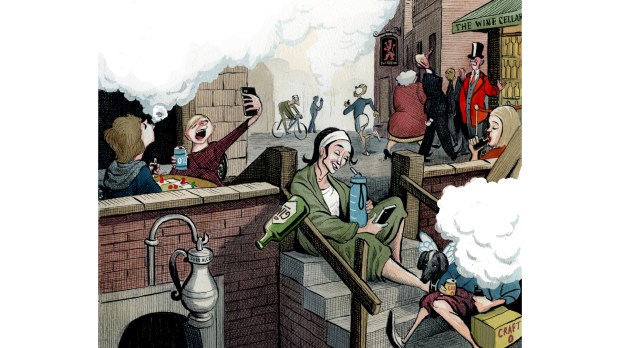Britain’s hunting estates were once beautiful. Walking through the New Forest, we can all appreciate how the purchase of land for hunting can radically protect our countryside. Almost a thousand years after William the Conqueror set aside this wooded wonderland, we can still enjoy its aged oak pastures, Britain’s largest herds of free-roaming grazing animals, and a chorus of birdsong that has been lost in most other corners of our land.
Britain’s original royal forests model is recognised around the world as a commonsense approach to hunting. From Alaska to Scandinavia, hunters, alongside ecotourists, invest huge profits to sponsor the natural world. Hunters take a quota of animals from these special places — and leave the rest. This approach, known as ‘sharing’, ensures landowners make enormous profits, enjoy the respect of society and bequeath to the nation extraordinary biodiversity. A Finnish hunting estate will be hunted for elk, boar, deer and grouse. It will also abound with eagles, cranes, four species of grouse and thousands of wading birds. This is the kind of paradise that any British landowner would love to own.
Sadly, 150 years ago, our hunting estates made a terrible mistake. They decided to turn red grouse into the equivalent of living clay pigeons — and shoot them, without skill, in their thousands. To do so, they created grouse farms in our uplands: wastelands, scorched to feed just one bird.
After more than 100 years of destroying our national heritage, grouse moors have left our countryside immeasurably poorer. Our upland wildlife — an ecological gallery of wildcats, eagles, hen harriers and many other iconic species — has been relentlessly wiped out. One shooting estate’s infamous record illustrates the industrial scale of the killing. On Glengarry Estate in the Highlands, between 1837 and 1840 alone, 27 white-tailed eagles, 15 golden eagles, 18 ospreys, 275 red kites, 63 goshawks, 462 kestrels, 285 buzzards, 63 hen harriers and 198 wildcats were killed. To put this in perspective, just 35 wildcats remain today.
Extraordinary acts of desecration are usually repaired a few generations later, especially in a country as cultivated as our own. But the grouse moor debt has never been repaid. Now, amid the burned wreckage, we are supposed to be thankful for the grouse that are sustained by what was once an extraordinary landscape.
Yet it is the staggering economics of our hunting estates that would make any Conservative financier see blue. For the 8 per cent of British land that grouse moors use, they contribute one job for every 6.5 square kilometres. In all, English and Scottish moors together contribute 0.005 per cent to Britain’s GDP. Astonishingly, they create 0.008 per cent of its jobs. These are economic deserts without parallel.
Grouse moors claim they boost local economies. Those economies beg to differ. In all, 16 per cent of shooters spend just one night in a B&B each year. The RSPB’s tiny but popular reserves brought the same income to the UK economy in 2009 as all our grouse moors combined. The English adult population makes more than three billion visits to the natural environment each year, splashing £21 billion in the process. In Scotland, nature-based tourism is estimated to produce £1.4 billion per year, along with almost 40,000 jobs. Britain’s grouse moors, meanwhile, account for just over 1,772 jobs directly involved in the industry.
Grouse moors are running at an epic loss, while destroying both jobs and wildlife. Unsurprisingly, there is now increasing pressure to call it a day. But there could be a very different route — which would be to follow the older royal forests model. What I suggest is simple: landowners must rewild these estates.
Our hunting estates, empty and depopulated, are suited to extraordinary acts of natural restoration in a way that no other British land is. Rewilded estates are beautiful and their opportunities diverse. Running costs are far lower, being governed by free-growing trees and free-roaming animals, which help maintain those crucial open habitats for birds such as curlews. Famous and profitable estates such as Knepp, in Sussex, are already revealing the astonishing biodiversity seen when herbivore rewilding takes place. But in our uplands, it could take place on a different scale altogether.
In the past, landowners have acted with extraordinary vision. More than a century before the RSPB came into being, the enterprising Marquess of Breadalbane reintroduced the capercaillie to Scotland. This irate turkey still rampages through our Caledonian woodlands.
Imagine, then, the steps that could be taken to rewild a large hunting estate in northern England. Defying our country’s savage bureaucracy and the small-minded people telling you ‘no’, you could regrow birch and pine forests, reintroduce black grouse and capercaillie, and release wild horses and free-roaming cattle on to the hills.
Millions would pay to photograph elk rutting on your land — but first you would need to put them back. Needless to say, the hunting bounties on an animal that last walked Britain in the Bronze Age would be enormous. In Finland, spectacular banquets of the day’s hunt — elk, boar and grouse — are served. Impressive animals are harvested from impressive landscapes. Grouse moor owners, meanwhile, can only flaunt their tracts of burned heather.
Those who have the time and money to hunt also have the capacity to undertake epic endeavours — and to oversee acts of restoration. Britain’s landowners have the power to change past mistakes. Just 175 people in England own all our grouse moors. They could transform our country for ever.
Got something to add? Join the discussion and comment below.
Get 10 issues for just $10
Subscribe to The Spectator Australia today for the next 10 magazine issues, plus full online access, for just $10.
You might disagree with half of it, but you’ll enjoy reading all of it. Try your first month for free, then just $2 a week for the remainder of your first year.














Comments
Don't miss out
Join the conversation with other Spectator Australia readers. Subscribe to leave a comment.
SUBSCRIBEAlready a subscriber? Log in